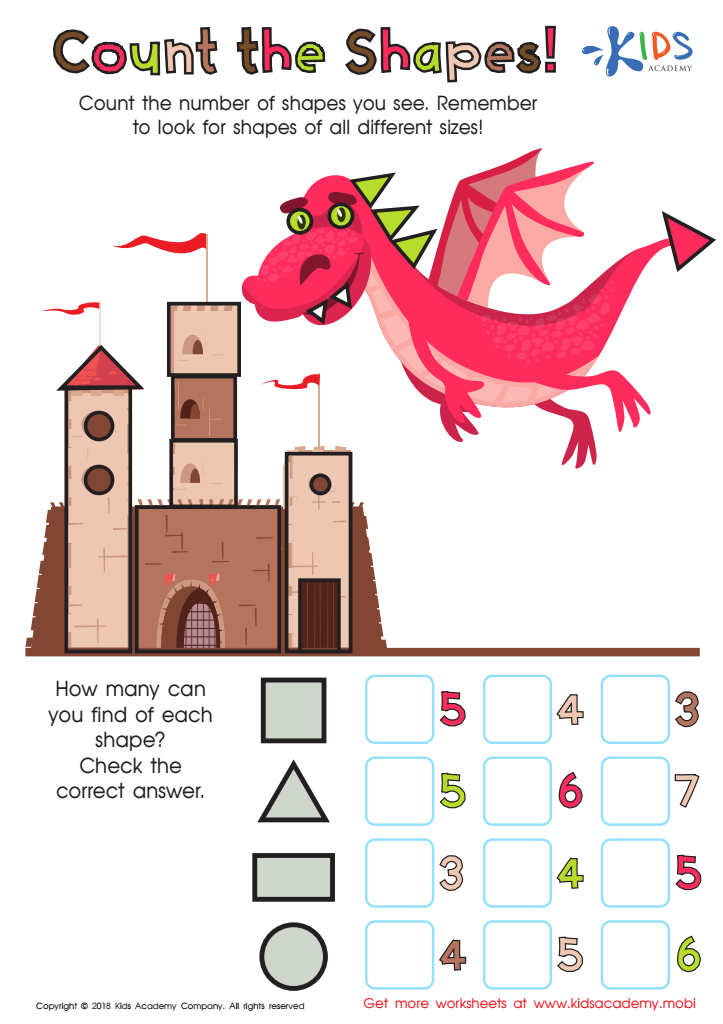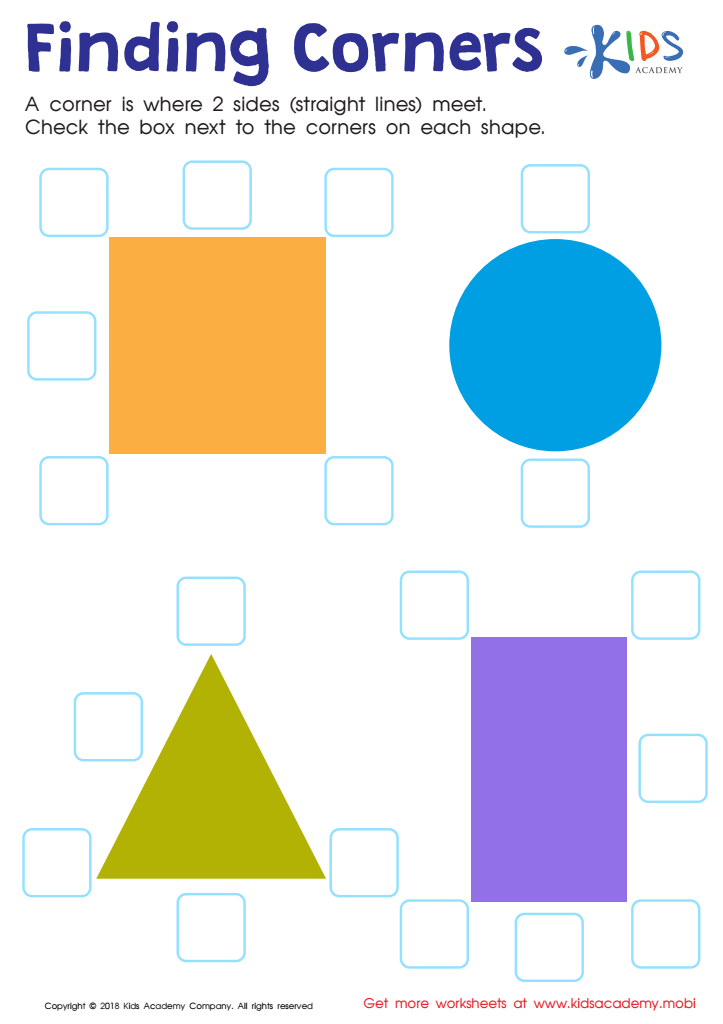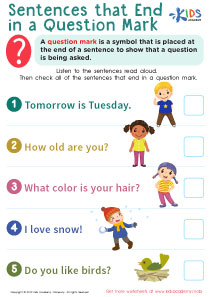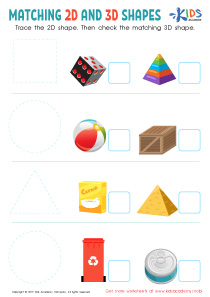Counting skills Kindergarten 2D Shapes Worksheets
5 filtered results
-
From - To
Enhance your child’s numeracy and geometry skills with our "Counting Skills Kindergarten 2D Shapes Worksheets." These engaging, educational worksheets are designed to help young learners recognize and count various shapes such as circles, squares, triangles, and more. Each activity encourages kids to count, compare, and categorize shapes, building a strong foundation in both counting and spatial awareness. Perfect for classroom or home use, these printable worksheets are an excellent resource for kindergarten students to practice essential math skills in a fun and interactive way. Boost early learning success with our expertly crafted counting and shape recognition exercises!


Geometry – Assessment 1 Worksheet


Count the Shapes Worksheet


Using Squares to Make Rectangles Worksheet


Finding Corners Worksheet


Gingerbread Man Geometry Maze Worksheet
Counting skills and understanding 2D shapes are foundational aspects of a child's early education, setting the stage for their cognitive and academic growth. For parents and teachers, fostering these skills in kindergarten is essential for several reasons.
First, counting lays the groundwork for numeracy, enabling children to understand the basic principles of mathematics. It enhances their ability to perform simple calculations, recognize number patterns, and solve problems, which are crucial skills for more advanced math. Moreover, counting activities improve memory and attention span, which are vital for overall learning.
Next, familiarity with 2D shapes helps children recognize and identify geometric figures such as circles, squares, and triangles in their environment. This recognition fosters spatial awareness and visual discrimination, important for reading and writing as children differentiate between letters and numbers. It also enhances their ability to describe and categorize objects, boosting vocabulary and language skills.
Together, counting and understanding 2D shapes foster a child's logical thinking and analytical abilities. They combine to create a strong base for subjects like science, technology, and engineering. By investing time in teaching these skills, parents and teachers help children develop self-confidence, preparing them for school success and lifelong learning.
 Assign to My Students
Assign to My Students


















